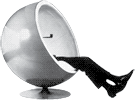Chromium Browser on OpenBSD
Usage in XFCE
To create a Chromium icon in XFCE’s menu, create the file chromium.desktop in /usr/local/share/applications/.
[Desktop Entry]
Version=1.0
Type=Application
Categories=Application;Network
Name=Chromium
Comment=Chromium Web browser
Icon=/usr/local/chrome/product_logo_48.png
Exec=chrome %u
Path=
Terminal=false
StartupNotify=false
This is no longer need in OpenBSD 5.1. A chrome.desktop is installed by default by chromium package.
Chromium "datasize" message
Chromium start with a message dialog if it find it has too low datasize setting. I tried to change the datasize-cur and datasize-max setting in /etc/login.conf for default class but it didn't help.
What I didn't realize was that login.conf specify data for user classes and not groups. My login user didn't belong to any class and therefore the information in login.conf was not applied.
The simplest way to change the datasize setting is to accociate your user to the staff class which already have enough datasize configured by default. Run to following to open your default editor to edit your user data. Enter "staff" at the user class entry.
sudo chsh <user>
After an logout/login the message should be gone when starting chromium.
Setting user limits
Setting user limits of different resources e.g. datasize involves a number of layers.
At the OS system level limits must be broad enough to allow your setting. See sysctl.conf.
Next the login class (specified in login.conf) associated with the specific user must specify correct limits. A simple datasize setting both specify the -max and the -cur limits. A datasize-max set the maximum current value which is allowed to be set by the user via e.g. ksh ulimit. Check capabilities via getcap or user. Any login rc script may include a ulimit call which change the setting.
YouTube
HTML5 YouTube works but unfortunately lacks sound because sndio backend isn't developed yet. See Chrome HTML5 video - no audio.
